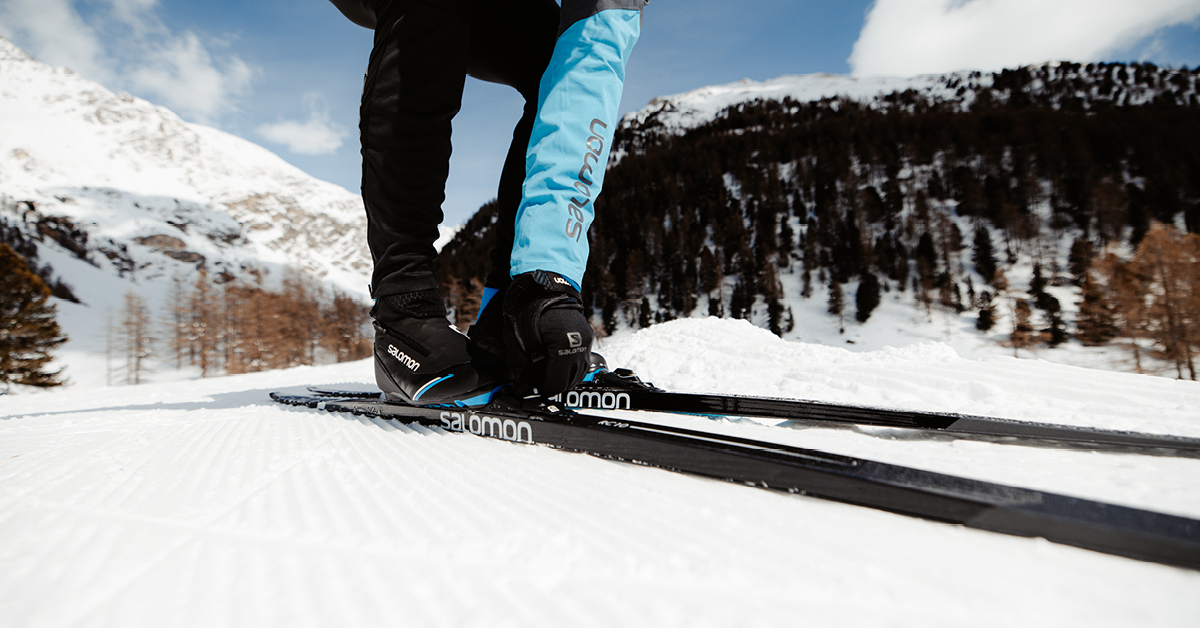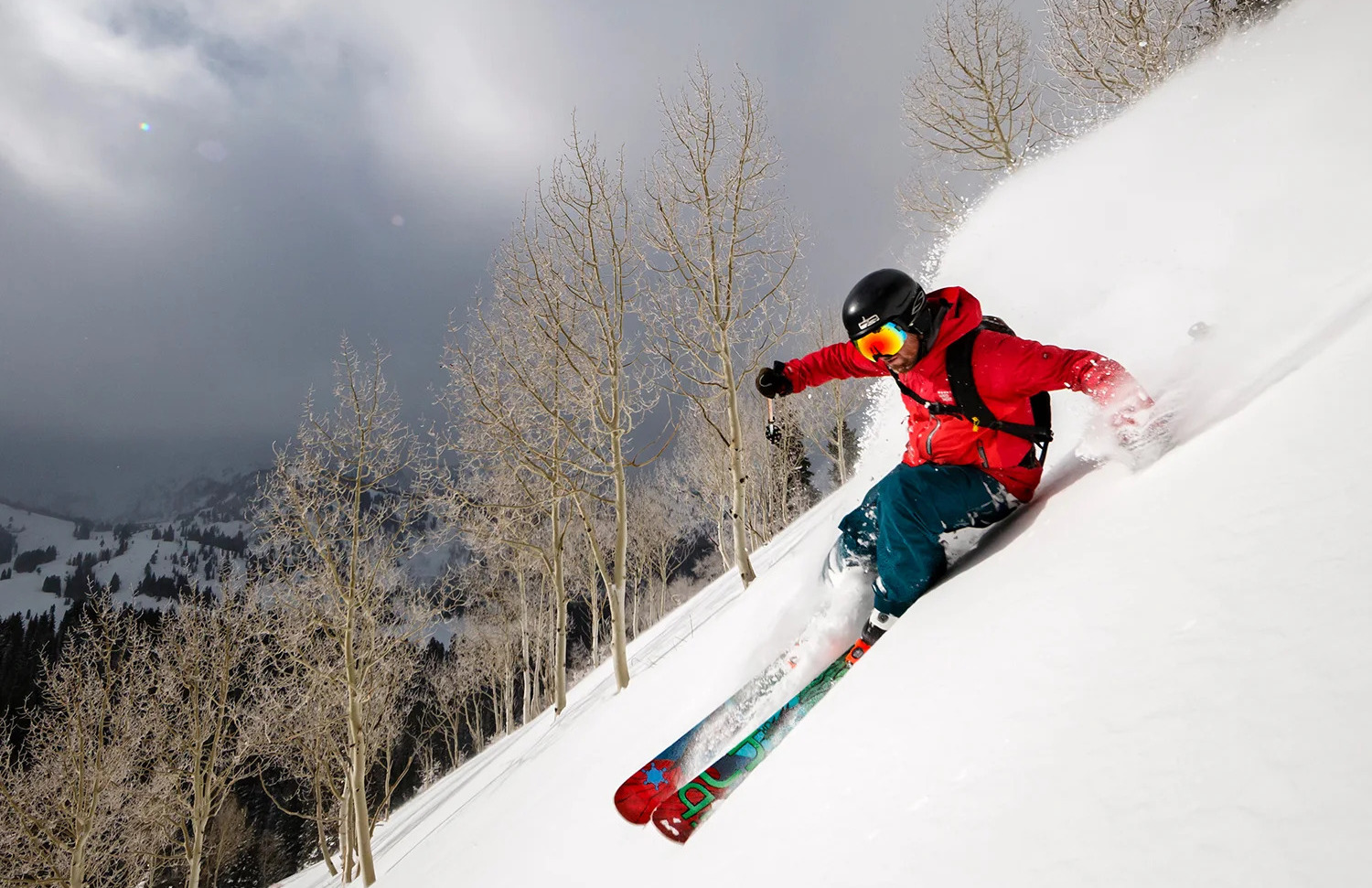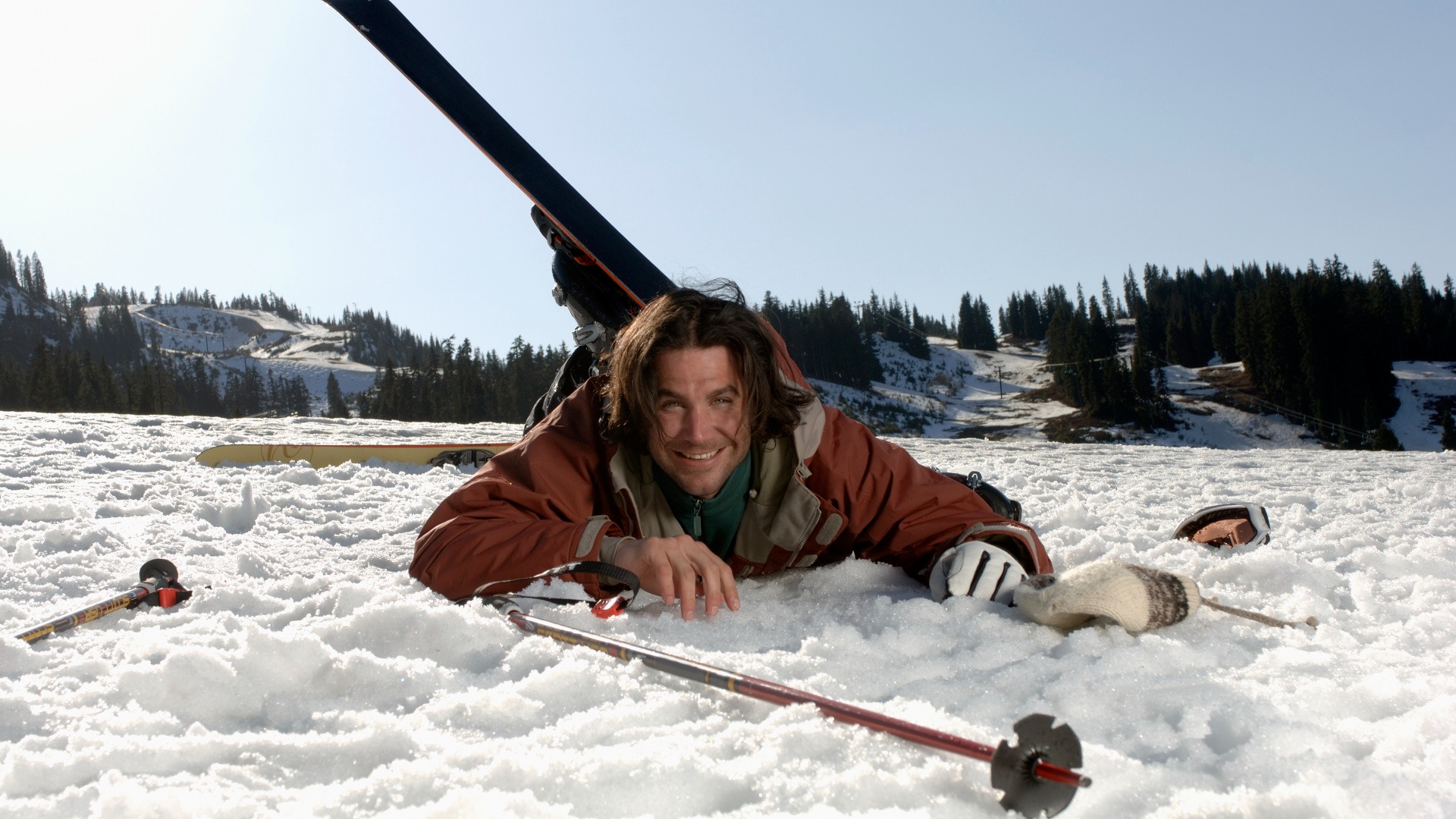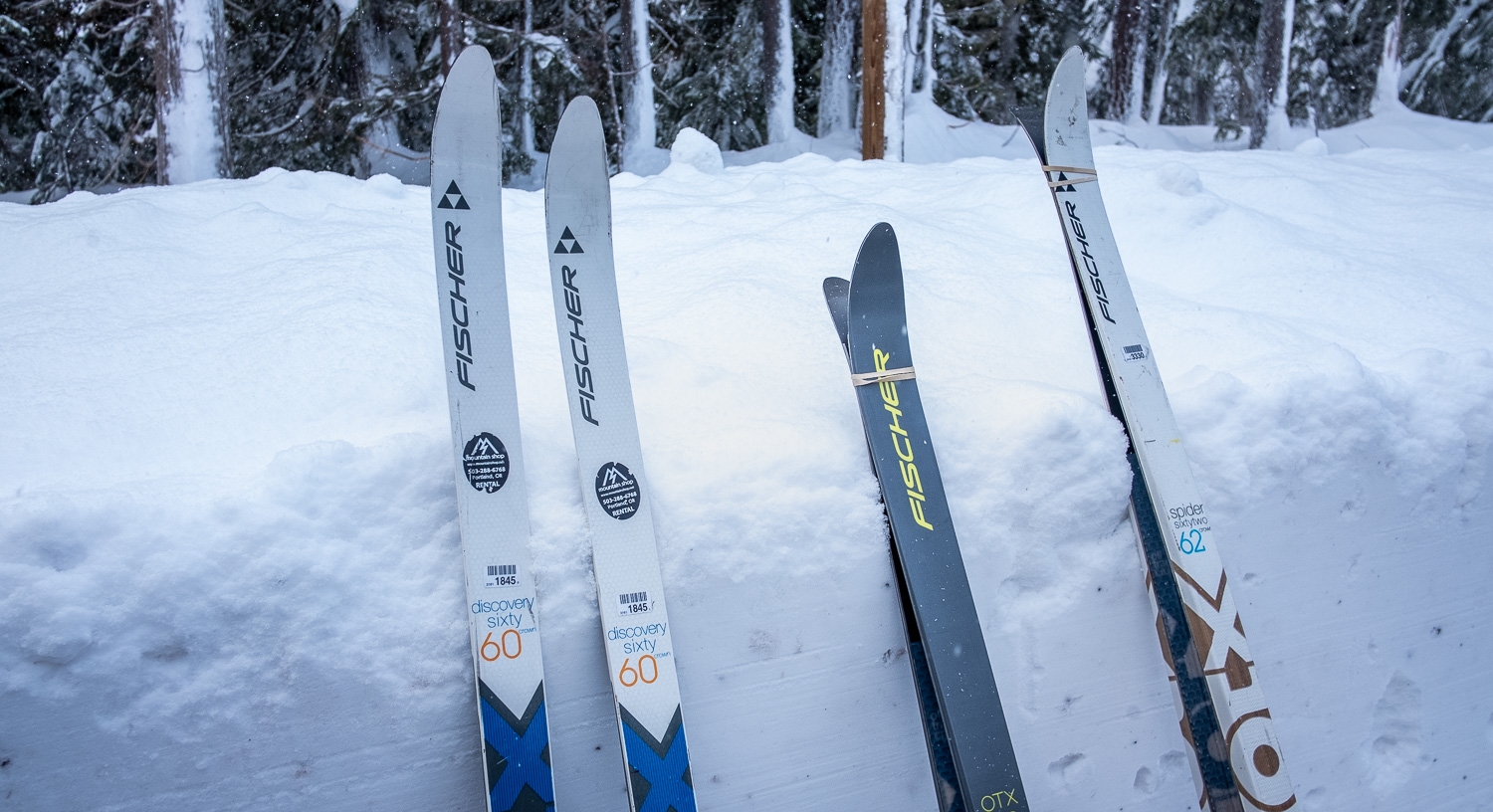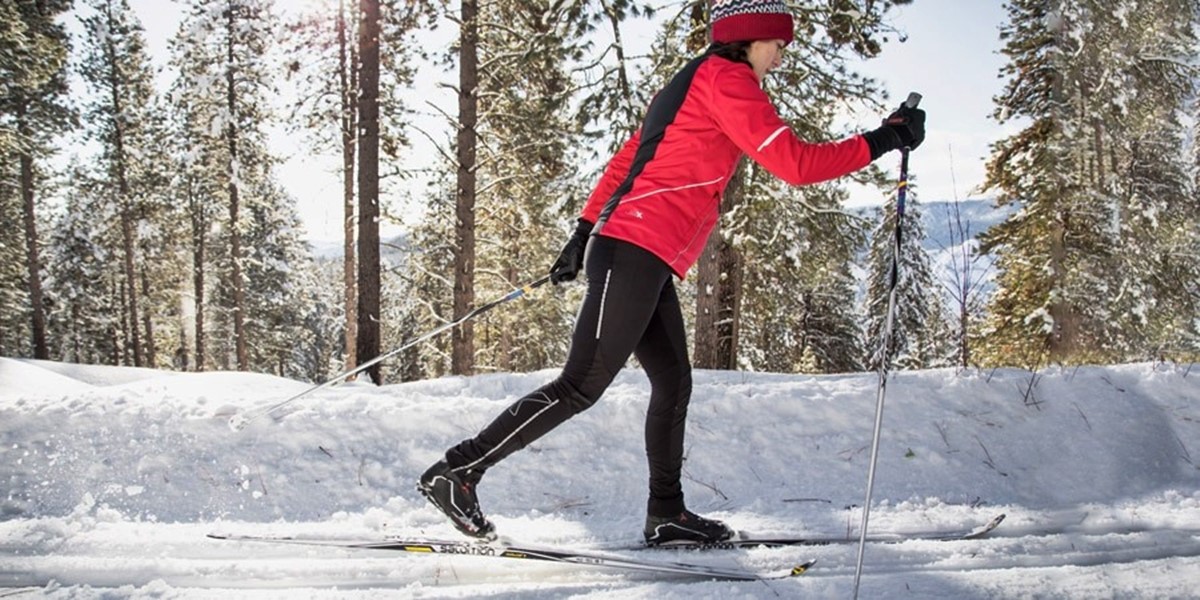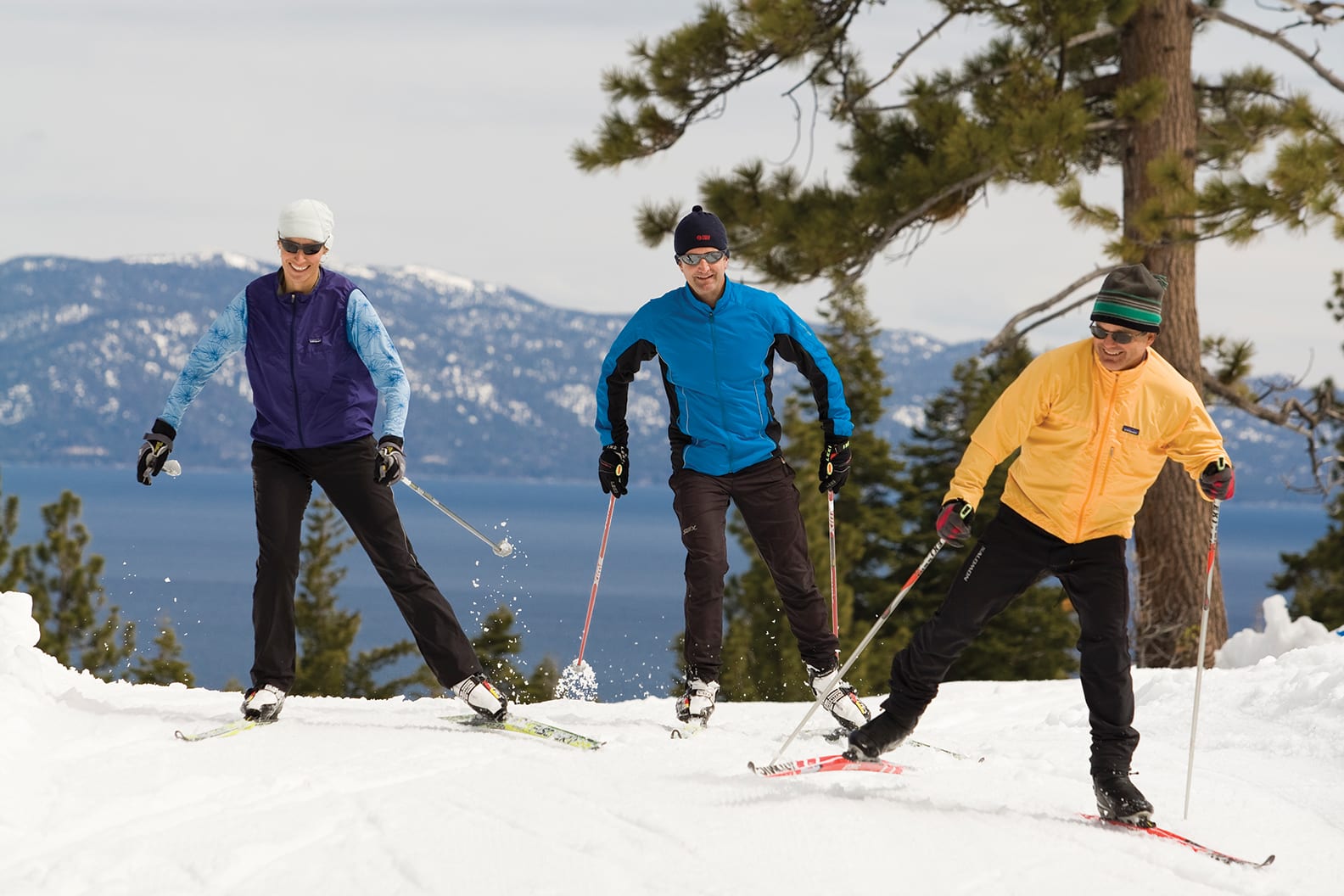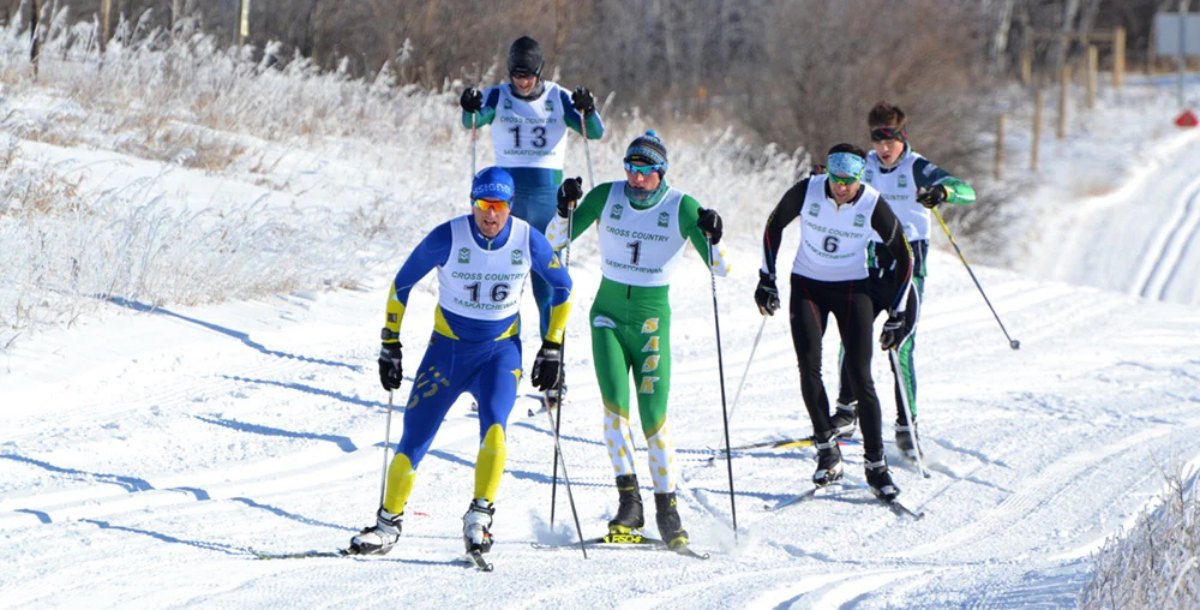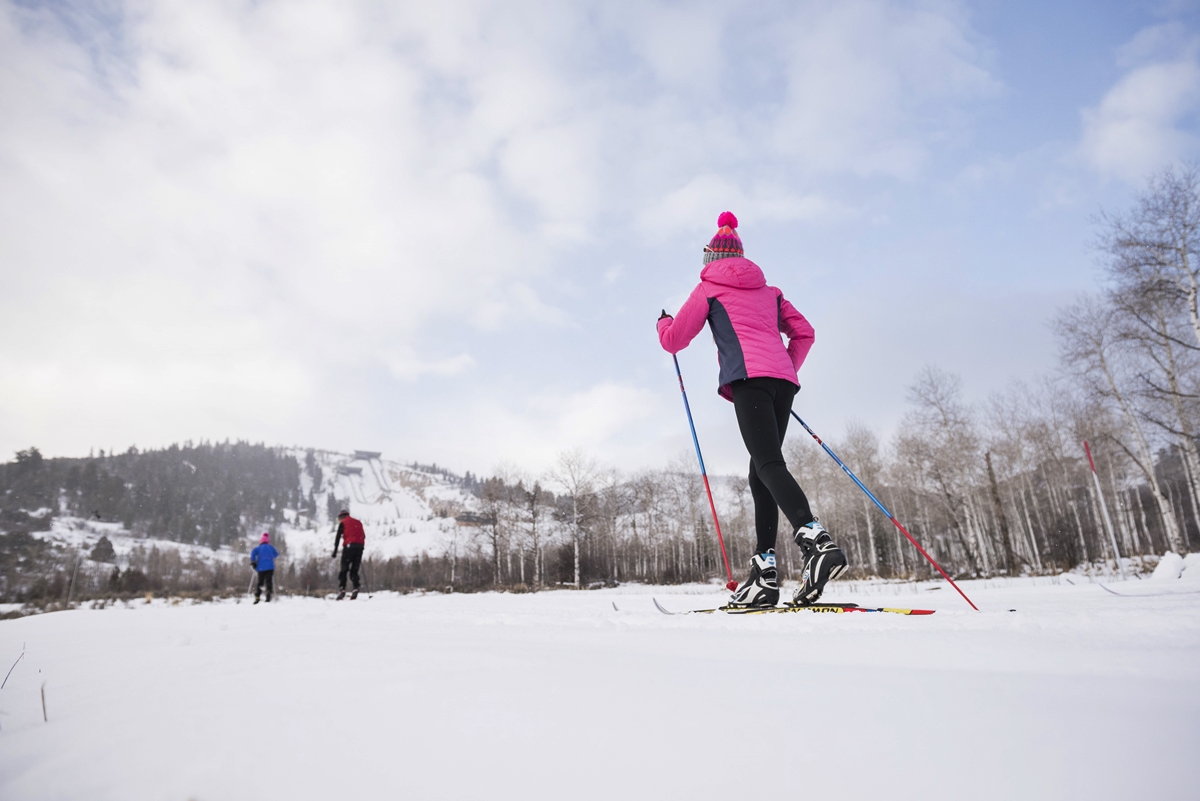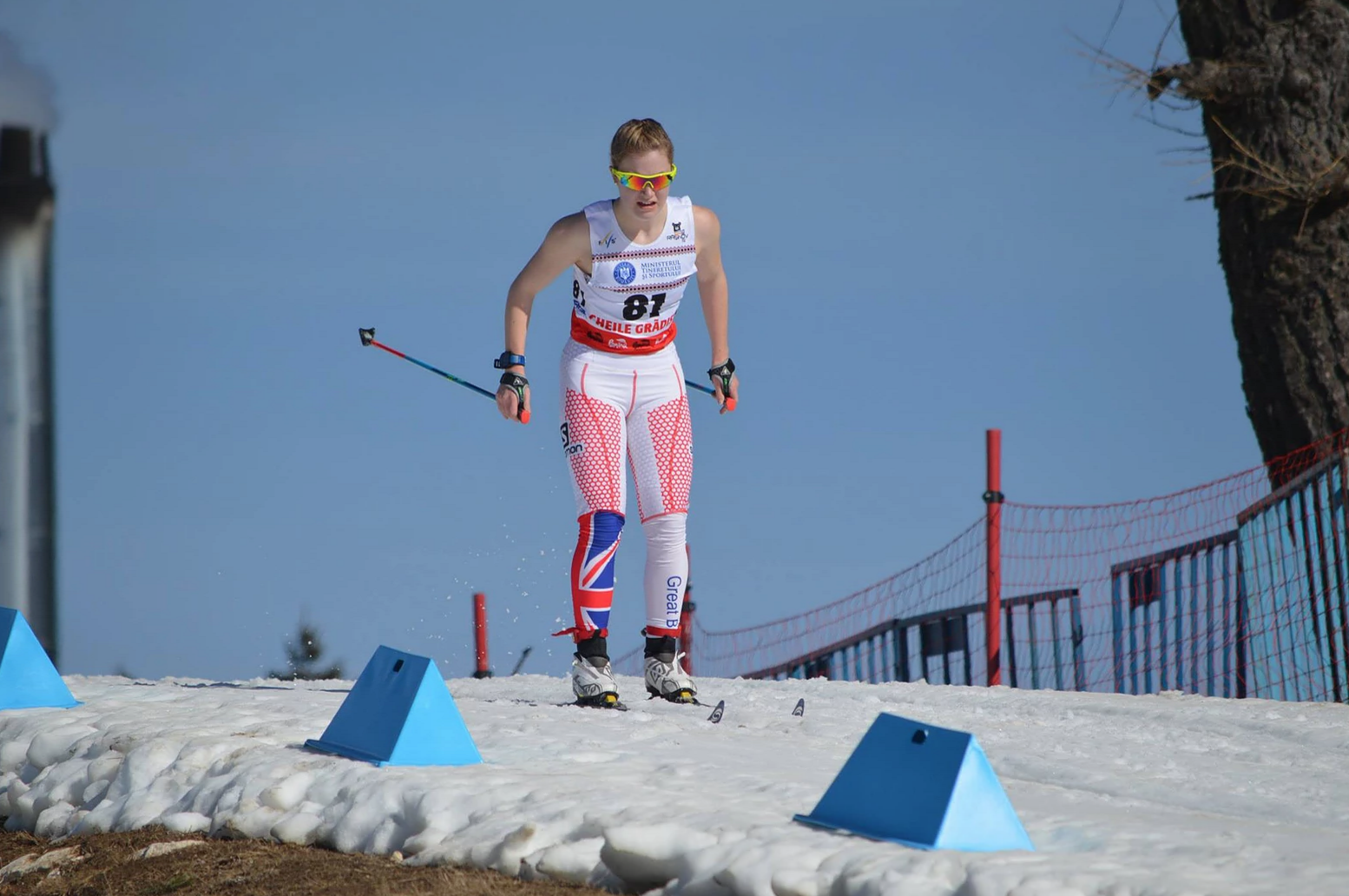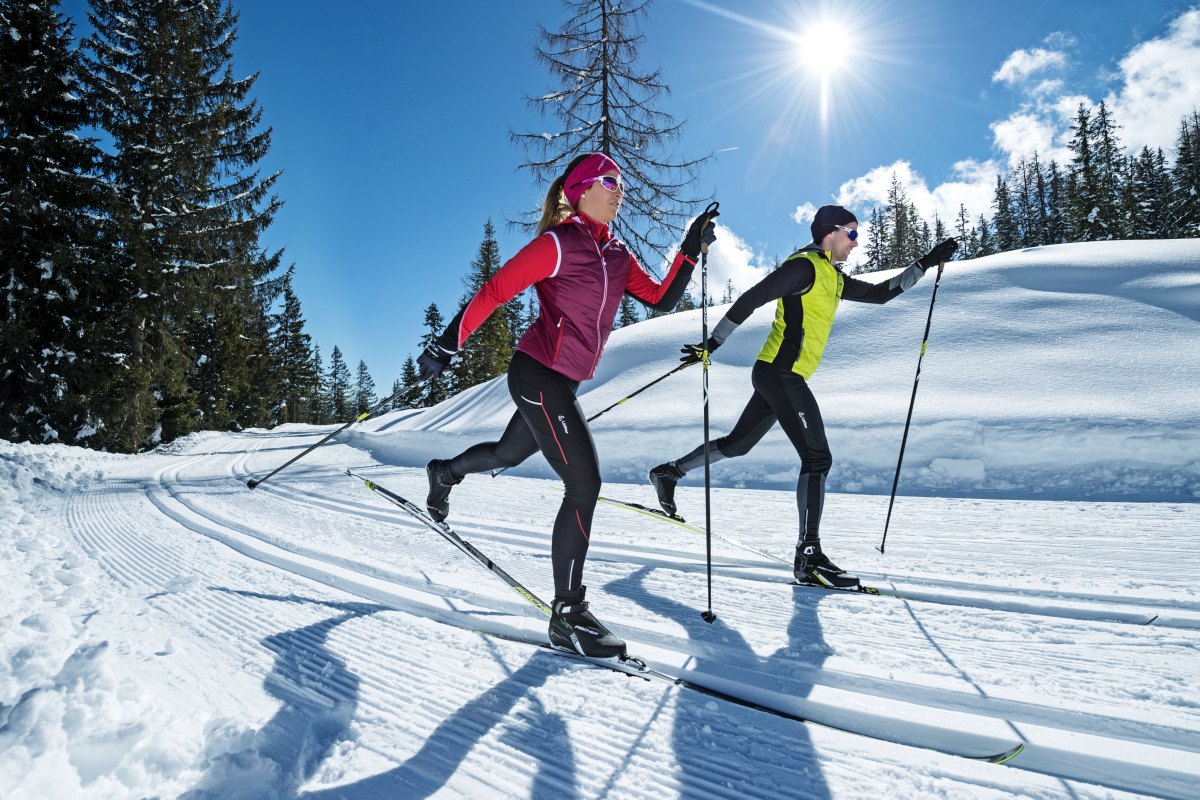Home>Misc>Featured>How Long Should Cross Country Skis Be Chart


Featured
How Long Should Cross Country Skis Be Chart
Modified: May 22, 2024
Find the perfect length of cross country skis with our comprehensive chart. Discover optimal measurements and features for a featured skiing experience.
Introduction
Cross country skiing is a popular winter sport that combines cardiovascular exercise with the tranquility of nature. Whether you’re a beginner looking to explore the winter landscape or an experienced skier seeking an adrenaline rush, choosing the right pair of cross country skis is crucial to your enjoyment and performance on the trails.
With a wide range of ski options available, it can be overwhelming to determine the ideal length for your skis. The length of your skis plays a significant role in your ability to control them and glide efficiently. It’s essential to find the right balance between length and maneuverability to ensure an enjoyable skiing experience.
In this article, we will cover the essential factors to consider when choosing cross country skis and provide recommendations on how long your skis should be based on different skiing styles. Additionally, we will provide a helpful ski length chart to assist you in making an informed decision. So, let’s dive in!
Factors to Consider when Choosing Cross Country Skis
When selecting cross country skis, there are several key factors to consider that will influence your choice of ski length. Understanding these factors will help you make an informed decision and ensure that your skis are well-suited to your skiing style and ability. Here are some important considerations:
- Weight: Your weight is a crucial factor in determining the length of your skis. Heavier skiers typically require longer skis to provide adequate support and stability, while lighter skiers may prefer shorter skis for enhanced maneuverability.
- Skiing Style: Different skiing styles require different ski lengths. Classic cross country skiing, which involves a more upright stance and a gliding motion, typically calls for longer skis. Skate skiing, on the other hand, involves a more aggressive, skate-like motion and generally requires shorter skis for better maneuverability and control.
- Skiing Terrain: The type of terrain you plan to ski on should also influence your ski length choice. Longer skis are better suited for open, groomed trails, while shorter skis excel in more technical, narrow, and winding trails.
- Skiing Ability: Your skiing ability level plays a significant role in determining the appropriate ski length. Novice skiers may benefit from shorter skis, which are easier to control and maneuver. Intermediate and advanced skiers may opt for longer skis to take advantage of higher speeds and improved stability.
- Personal Preference: Ultimately, your personal preference should guide your ski length decision. If you prefer a more comfortable, leisurely skiing experience, you may opt for slightly shorter skis. If you enjoy a more aggressive, high-speed style, longer skis may be the better choice.
By considering these factors, you will be able to narrow down your options and find the ideal ski length that suits your needs and preferences. However, it’s important to note that these factors are not definitive rules, but rather general guidelines. It’s always best to consult with a knowledgeable salesperson or ski instructor who can provide tailored advice based on your specific circumstances.
Understanding Ski Length
Before diving into ski length recommendations, it’s essential to understand how ski length is measured and its impact on cross country skiing performance. Ski length is typically measured in centimeters and refers to the distance from the tip to the tail of the ski. The length of the ski influences its overall stability, maneuverability, and gliding ability.
Longer skis offer increased stability and glide, making them well-suited for open, groomed trails and faster skiing. They provide better stability at higher speeds and are more forgiving while gliding. However, longer skis can be more challenging to maneuver in tight turns and technical terrain.
On the other hand, shorter skis offer enhanced maneuverability, making them ideal for tight turns, technical trails, and skate skiing. They are also more responsive, allowing for quicker accelerations and easier control. However, shorter skis may sacrifice some stability and glide compared to their longer counterparts.
It’s important to strike a balance between stability and maneuverability when choosing ski length. Finding the right ski length will ensure that you can ski comfortably, maintain control, and enjoy the specific style of cross country skiing you prefer. Ski length is a personal preference, and the ideal length can vary based on your skiing style, ability level, and other individual factors.
Keep in mind that ski length is not the only consideration when choosing cross country skis. Other factors such as flex, camber, and sidecut also play a role in determining the overall performance and feel of the skis. Therefore, it’s recommended to consult with a knowledgeable professional or do thorough research to find the best combination of factors for your specific needs.
By understanding the impact of ski length on ski performance and considering your skiing style, ability, and personal preferences, you will be able to make a more informed decision when selecting the ideal ski length for your cross country adventures.
How Long Should Cross Country Skis Be?
The optimal length for cross country skis varies depending on various factors, including your body weight, skiing style, terrain, ability level, and personal preference. While there is no one-size-fits-all answer, below are some general guidelines to help you determine the appropriate ski length:
For classic cross country skiing, a common rule of thumb is to choose skis that are approximately 20-30 centimeters longer than your height. This length provides good stability and glide, especially on well-groomed trails and flat terrain. Keep in mind that this is a starting point, and adjustments may be needed based on other factors.
If you prefer skate skiing, a popular guideline is to select skis that are approximately 10-15 centimeters shorter than your height. Shorter skis offer improved maneuverability and control, which are essential for the dynamic, skate-like motion involved in this style of skiing.
It’s important to note that these guidelines are just starting points and should be adjusted based on your weight, skiing ability, and personal preference. Heavier individuals may need slightly longer skis for stability, while lighter skiers may prefer shorter skis for better maneuverability.
Additionally, the type of terrain you plan to ski on should also influence your ski length choice. Longer skis are generally more suitable for open, groomed trails that allow for longer glides and higher speeds. On the other hand, shorter skis excel in more technical terrain, such as narrow and winding trails, where maneuverability is crucial.
It’s worth emphasizing that these guidelines are not strict rules but rather starting points. Experimentation and personal preference play an important role in finding the ideal ski length. Ultimately, you should choose a length that feels comfortable, allows you to maintain control, and aligns with your skiing style and goals.
If you’re still uncertain about the appropriate ski length for you, seeking advice from a knowledgeable salesperson or ski instructor can provide valuable insights based on your specific circumstances and preferences.
Remember, finding the right ski length is not an exact science, and it may take some trial and error to discover your perfect fit. Embrace the process and allow yourself the freedom to explore different ski lengths until you find the one that enhances your cross country skiing experience and allows you to enjoy the wonders of the winter landscape.
Ski Length Recommendations based on Skiing Style
The ideal ski length for cross country skiing depends on your preferred skiing style. Here are some general recommendations based on different skiing styles:
- Classic Cross Country Skiing: For classic skiing, where you use a gliding motion and a diagonal stride, ski length should typically be around 20-30 centimeters longer than your height. This length provides better stability and glide on flat and well-groomed trails, allowing you to enjoy the rhythm and beauty of classic skiing. Keep in mind that this recommendation may vary based on your weight and personal preference.
- Skate Skiing: Skate skiing involves a motion similar to ice skating, with a strong push from the edges of the skis. For this style, ski length should be approximately 10-15 centimeters shorter than your height. Shorter skis enhance maneuverability and control, enabling quick, dynamic movements required for skate skiing. Remember that personal preference and individual factors may influence the exact length that suits you best.
- Backcountry Skiing: Backcountry skiing involves venturing off the groomed trails and exploring untouched snow-covered terrain. The recommended ski length for backcountry skiing is typically longer than the traditional cross country skiing lengths. Skis can be 10-20 centimeters longer than your height to provide additional stability and floatation in deep snow and uneven terrain.
- Telemark Skiing: Telemark skiing is a combination of cross country skiing and downhill skiing, with a free heel and a lunging motion. Ski length for telemark skiing can vary, but a general guideline is to choose skis that are similar in length to your height. This length provides balance and control for both uphill and downhill engagements.
It’s essential to remember that these recommendations are starting points and should be adjusted based on personal preference, weight, and other individual factors. Additionally, factors such as skiing ability, desired speed, and terrain should also influence your ski length choice.
When in doubt, consulting with a knowledgeable salesperson or ski instructor can provide tailored advice based on your specific circumstances. They can take into account your skiing experience, body weight, and terrain preferences to help you find the perfect ski length that suits your skiing style and goals.
Experimentation and fine-tuning are key when determining the right ski length. You may need to try different lengths to find the one that provides the optimal balance of stability, maneuverability, and comfort. Enjoy the process of discovering your ideal ski length as you hit the trails and embrace the magic of cross country skiing.
Ski Length Chart
Below is a ski length chart that provides a general overview of recommended ski lengths based on body weight and skiing style. However, keep in mind that this chart serves as a starting point, and personal preferences, terrain, and ability level should also be considered when choosing the ideal ski length:
| Body Weight (lb) | Body Weight (kg) | Classic Ski Length (cm) | Skate Ski Length (cm) | Backcountry Ski Length (cm) |
|---|---|---|---|---|
| 100-125 | 45-56 | 150-165 | 140-155 | 155-170 |
| 125-150 | 57-68 | 160-175 | 150-165 | 165-180 |
| 150-175 | 69-79 | 170-185 | 160-175 | 175-190 |
| 175-200 | 80-91 | 180-195 | 170-185 | 185-200 |
| 200+ | 92+ | 190+ | 180+ | 195+ |
This chart provides a rough guideline for ski lengths based on body weight and skiing style. As mentioned earlier, it’s essential to consider other factors such as skiing ability, terrain, and personal preference when determining the ideal ski length.
Remember that these recommendations are not set in stone, and individual variations may occur. If you fall between weight categories or have specific circumstances, it’s always a good idea to seek advice from a knowledgeable professional who can provide personalized recommendations.
Use this ski length chart as a starting point, but be open to adjustments and experimentation to find the perfect ski length that allows you to optimize your performance, control, and enjoyment on the cross country trails.
Tips for Selecting the Right Ski Length
Choosing the right ski length can greatly enhance your cross country skiing experience. To help you in your decision-making process, here are some useful tips for selecting the right ski length:
- Consider your skiing style: Determine whether you prefer classic skiing or skate skiing, as this will influence the ideal ski length for you. Classic skiing generally requires longer skis, while skate skiing typically calls for shorter skis.
- Take your body weight into account: Heavier individuals generally require longer skis for added stability, while lighter skiers may opt for shorter skis for better maneuverability. Consult the ski length chart and consider your weight range to get a rough idea of the appropriate ski length.
- Assess your skiing ability: If you’re a beginner, shorter skis may be more manageable and easier to control. Intermediate and advanced skiers may opt for longer skis to take advantage of increased speed and stability.
- Consider the terrain: Think about the type of trails and terrain you’ll be skiing on. Longer skis are better suited for open, groomed trails, while shorter skis excel in narrow, technical terrain.
- Seek professional advice: If you’re still unsure about the ideal ski length for you, don”t hesitate to consult with a knowledgeable salesperson or ski instructor. They can provide personalized recommendations based on your specific abilities, weight, and goals.
- Try before you buy: Whenever possible, test out different ski lengths before making a final decision. Rental options or demo days provide an excellent opportunity to experience different ski lengths and gauge their suitability for your skiing style.
- Consider personal preferences: Ultimately, the most important factor in selecting ski length is your personal preference. If you have a specific skiing style or comfort preference, prioritize that when making your decision.
By taking these tips into consideration, you can make a more informed decision when selecting the right ski length. Remember that ski length is not a rigid rule, but rather a general guideline to help you find a ski length that suits your needs and preferences.
Be open to experimentation and fine-tuning. Every skier is unique, and the perfect ski length for you may differ from the recommendations. Enjoy the process of finding your ideal ski length and embrace the joy of gliding on cross country skis through snowy trails.
Conclusion
Choosing the right ski length is a crucial step in maximizing your enjoyment and performance in cross country skiing. By considering factors such as body weight, skiing style, terrain, and personal preferences, you can make an informed decision when selecting the ideal ski length for your adventures on the trails.
Remember that ski length guidelines are just that – guidelines. Individual variations and personal preferences play a significant role in finding the perfect ski length. It’s always beneficial to seek advice from professionals or experts who can provide tailored recommendations based on your specific circumstances and goals.
Experimentation and trying out different ski lengths are part of the journey in finding the right fit. Take advantage of rental options or demo days to test various ski lengths and gauge their suitability for your skiing style and ability.
Whether you prefer classic cross country skiing, skate skiing, backcountry skiing, or telemark skiing, there is a ski length that will allow you to glide effortlessly and confidently on the snow-covered trails.
Embrace the beauty of winter landscapes, enjoy the cardio workout, and find your rhythm as you glide through the serene wilderness on the perfect pair of cross country skis, custom-tailored to your needs.
So go ahead, equip yourself with the knowledge gained from this guide, consider the factors that influence ski length, consult with experts, and embark on your cross country skiing adventures with confidence, knowing that you have selected the right ski length for an incredible experience on the trails.
